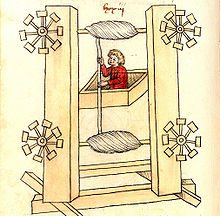 January 2022
January 2022
An aggressive smallpox epidemic and how it was handled in Boston is surprisingly similar to recent COVID-related events. The epidemic was nearly contained until anti-vax propaganda came along.
The death toll of more than 1,000 residents would likely have been higher had it not been for an effective vaccination campaign. In 1901, a quarter century later, smallpox was back with a vengeance. In the coming months an estimated three out of every 1,000 people in the city of half a million would get the disease and nearly 20 percent would die from it. The odds of infection were greater for the city’s Black residents and immigrant families who often lived in densely packed rooming houses. The airborne disease spread easily through coughs and sneezes.
The Boston health board fought smallpox as if it were a military operation that included free vaccinations at locations around the city. Local health boards forced people to be inoculated as hundreds of doctors went door-to-door. Police officers would pin down occupants so physicians could administer vaccines. Anyone refusing the vaccination could face a 15-day jail sentence or five dollars fine, the equivalent of over $200 CDN today.
Opposition to vaccinations was strong among a minority of Bostonians. Anti-vaccination activists produced a brochure titled “Vaccination Is the Curse of Childhood” that falsely claimed vaccines cause smallpox instead of preventing it, and claimed the only real way to prevent infection was “good drainage, good ventilation, pure water and healthy food.” The group claimed compulsory vaccination was an infringement on their civil rights. Some physicians would provide signed certificates for children stating they were “unfit subjects for vaccination,” and should be exempt from requirements to show proof of vaccination to attend public school.
 The more than 80 percent of the city’s 586,000 residents that had been vaccinated by early 1902 was insufficient to reach herd immunity and the number of confirmed cases was growing. The smallpox outbreak was now an epidemic of the unvaccinated at a rate of nine out of every ten cases. A member of the Boston Board of Health chose to combat this by daring anti-vaxxers to willingly expose themselves to smallpox without being vaccinated.
The more than 80 percent of the city’s 586,000 residents that had been vaccinated by early 1902 was insufficient to reach herd immunity and the number of confirmed cases was growing. The smallpox outbreak was now an epidemic of the unvaccinated at a rate of nine out of every ten cases. A member of the Boston Board of Health chose to combat this by daring anti-vaxxers to willingly expose themselves to smallpox without being vaccinated.
The challenge was accepted by one physician, an anti-vaxxer and self-promoter who claimed he could treat chronic diseases. He argued that smallpox was not as contagious or debilitating as claimed by health officials. He further argued that the vaccination offered no protection, and was more dangerous than contracting smallpox. He willingly exposed himself to smallpox than disappeared 11 days later. After an extensive manhunt he was found sneaking through a dark back alley after visiting a doctor. He was found covered in smallpox pustules and barely able to speak. Finding everywhere the doctor visited and anyone he met with became a priority to prevent further deaths.
The doctor survived and media coverage of his exploits ensured many of the anti-vaxxers willingly accepted the vaccination.
 Boston eventually succeeded in its vaccination initiative although anti-vaccination efforts are believed to have unnecessary extended the epidemic until 1903. Boston’s last case was diagnosed in 1932 and a global immunization campaign eradicated smallpox in 1980.
Boston eventually succeeded in its vaccination initiative although anti-vaccination efforts are believed to have unnecessary extended the epidemic until 1903. Boston’s last case was diagnosed in 1932 and a global immunization campaign eradicated smallpox in 1980.
Today, more than 100 years later, we seem to be in no better position for dealing with a major outbreak.







